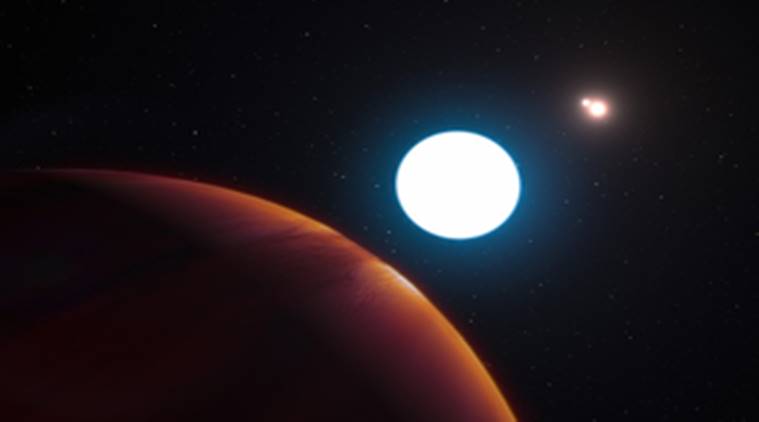Massive planet with three suns discovered

Scientists have
discovered a new planet - located 340 light years from Earth and four times the
mass of Jupiter - that orbits three stars and witnesses triple sunrises and
sunsets each day, depending on the seasons, which last longer than human
lifetimes.
Located about 340 light years from Earth in the constellation Centaurus, HD 131399Ab is about 16 million years old, making it one of the youngest exoplanets discovered to date, and one of very few directly imaged planets.
With a temperature of about 580 degrees Celsius and weighing about four Jupiter masses, it is also one of the coldest and least massive directly imaged exoplanets.
"HD 131399Ab is one of the few exoplanets that have been directly imaged, and it's the first one in such an interesting dynamical configuration," said Daniel Apai, an assistant professor at the University of Arizona in the US.
"For about half of the planet's orbit, which lasts 550 Earth-years, three stars are visible in the sky, the fainter two always much closer together, and changing in apparent separation from the brightest star throughout the year," said Kevin Wagner, a first-year PhD student in Apai's research group, who discovered HD 131399Ab.
"For much of the planet's year the stars appear close together, giving it a familiar night-side and day-side with a unique triple-sunset and sunrise each day," Wagner said.
As the planet
orbits and the stars grow further apart each day, they reach a point where the
setting of one coincides with
the rising of the other - at which point the
planet is in near-constant daytime for about one-quarter of its orbit, or
roughly 140 Earth-years," he said.
Wagner identified the planet among hundreds of candidates and led the follow-up observations to verify its nature.
The planet marks the first discovery of an exoplanet made with SPHERE (Spectro-Polarimetric High-Contrast Exoplanet Research Instrument), one of the world's most advanced instruments dedicated to finding planets around other stars.
The instrument is part of the Very Large Telescope operated by the European Southern Observatory (ESO) in Chile.
At the centre of the system lies a star estimated to be eighty per cent more massive than the Sun and dubbed HD 131399A, which itself is orbited by the two remaining stars, B and C, at about three-hundred astronomical unit (or AU, which the average distance between the Earth and the Sun).
All the while, B and C twirl around each other like a spinning dumbbell, separated by a distance roughly equal to that between our Sun and Saturn.
In this scenario, planet HD 131399Ab travels around the central star, A, in an orbit about twice as large as Pluto's if compared to our solar system, and brings the planet to about one-third of the separation of the stars themselves.
The research is published in the journal Science.
AIMIM News
Latest Urdu News
Most Viewed
Do you think Canada-India relations will improve under New PM Mark Carney?





















.jpg)
.jpg)
.jpg)
.jpg)

















